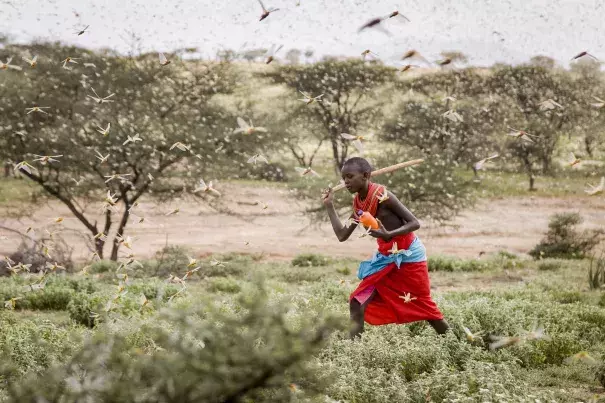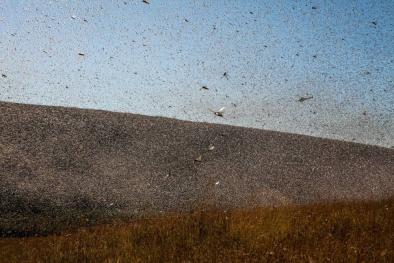AP Explains: How climate change feeds Africa locust invasion

Signals Summary: Climate change is making extreme rainfall more common, like the heavy rains East Africa saw in 2019, and this creates the perfect breeding conditions for locusts. Global warming is increasing both the amount of moisture the atmosphere can hold and ocean evaporation, which means there is more water to fuel storms, including cyclones.
Article Excerpt: Locusts by the millions are nibbling their way across a large part of Africa in the worst outbreak some places have seen in 70 years. Is this another effect of a changing climate? Yes, researchers say. An unprecedented food security crisis may be the result.
...
An “extremely dangerous increase” in locust swarm activity has been reported in Kenya, East Africa’s economic hub, regional authorities reported last week. One swarm measured 60 kilometers (37 miles) long by 40 kilometers (25 miles) wide in the country’s northeast, IGAD said.
Kenya hasn’t seen a locust outbreak like this in 70 years, Rosanne Marchesich, emergency response leader with the U.N. Food and Agriculture Organization, said Wednesday.
“It’s the worst that we’ve seen in Ethiopia and in Somalia in 25 years,” she added, noting extensive damage to crops. Millions of people in both countries already cope with the constant risk of drought or flooding, as well as deadly unrest in Ethiopia and extremist attacks in Somalia.
...
Heavy rains in East Africa made 2019 one of the region’s wettest years on record, said Nairobi-based climate scientist Abubakr Salih Babiker. He blamed rapidly warming waters in the Indian Ocean off Africa’s eastern coast, which also spawned an unusual number of strong tropical cyclones off Africa last year.
Heavy rainfall and warmer temperatures are favorable conditions for locust breeding and in this case the conditions have become “exceptional,” he said.
Even now rainfall continues in some parts of the vast region. The greenery that springs up keeps the locusts fuelled.
...
Major locust outbreaks can be devastating. One between 2003 and 2005 cost more than $500 million to control across 20 countries in northern Africa, the FAO has said. It caused more than $2.5 billion in harvest losses.



